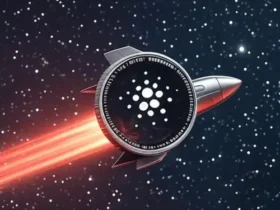On January 30, the USDT issuing company, Tether, said that integration would be ready soon.
USDT arrives in Bitcoin through the Taproot Asset protocol, which belongs to the Taproot update.
Yesterday, January 30, 2025, the Tether company communicated the integration of its stable currency, the most operated in the world, USDT, to the Bitcoin Network (BTC) and its second layer of micropagos, Lightning Network (LN).
As Cryptonotics reported, the announcement did not specify when the arrival of the Stablecoinalthough it does clarify that it will be available soon.
Technological integration It will be possible through the Taproot Assets protocolwhich is part of the Bitcoin Taproot update, an improvement that introduced a system to handle complex transactions, focusing on privacy and scalability.
Taproot added to the Bitcoin network the support for Schnorr cryptographic firms, allowing multiple firms to be combined in one, reducing the size of the transactions and improving efficiency.
Taproot Assets in Bitcoin allows the creation and transfer of digital assets, such as USDT. In this case, USDT would be issued as a fungible asset by means of a contract using the caproot update capabilities, where the asset metadata is embedded in a UTXO (transaction output not worn).
That process uses signatures Schnorr and Merkle trees for guarantee the validity of transfers and the conservation of the asset, while the complete data of the asset is stored outside the chain in repositories called «Universes«. These repositories allow users to verify the authenticity and history of the asset without overloading the Bitcoin network, maintaining scalability.
Once emitted, USDT could be transferred in both Bitcoin and through lighting Network.

USDT will benefit from Bitcoin
Users who prefer or only have access to the Bitcoin network could now interact with USDT No need to change to another network. Integrating USDT to Bitcoin would facilitate change (Swap) of that stable currency to BTC in Wallets that support the Bitcoin network, eliminating the need for other platforms such as centralized exchanges.
In addition, the arrival of USDT to Bitcoin could expand the liquidity and adoption options in markets where the Stablecoin It is used as a refuge against cryptocurrency volatility.
Users and companies could choose to make payments and remittances without depending on alternative networks, Taking advantage of the security, robustness and decentralization of Bitcoin as base infrastructure. This, in turn, would benefit merchants and users looking for a stable alternative to the dollar without leaving the bitcoin ecosystem.
Additionally, the arrival of USDT to Bitcoin could open a new spectrum of financial applications and services, using Bitcoin’s security and USDT stability.
What possibilities opens the use of USDT in Lightning Network?
The integration of the Stablecoin Tether on the Bitcoin Network and in his Lightning Network Payment layer could open new possibilities of use.
One of the main advantages of making payments with USDT in Lightning Network is the speed and low costs of that network, which offers optimal conditions for fast payments, low amounts and remittances. According to their Documentsthe payments in LN are “snapshots” or “almost snapshot” and the commissions of a few satoshis (1 satoshi is the minimum portion of BTC, which is equivalent to 0.00000001 BTC).
Since the lightning Network allows a greater number of transactions without overloading the Bitcoin network, integrating USDT in this second layer would make the Stablecoin Be more accessible and useful within the bitcoin ecosystem, thus expanding both financial and commercial possibilities. In turn, LN qualities could encourage the use of USDT for daily payments.
There were other USDT versions in Bitcoin
Prior to Tether’s announcement, there were already an wrapped version of USDT in Bitcoin. Its name is USDT-L, issued by Speed Wallet, of the Speed company, which developed this USDT version of Lightning Network.
SPEED BLOCK USDT IN A MULTIFIRMA WALLET (Multisig) and then broadcast USDT-L in the light network for the same amount. This process aims to ensure that each token wrapped is backed by an equivalent amount of USDT in the original network, thus maintaining its anchored value. In this way, users would access rapid and low-cost transactions using USDT-L in lightning Network.
On the other hand, Omni Layer was the first protocol used to broadcast USDT in Bitcoin, allowing the creation of anchored tokens through data embedded in BTC transactions. Tether Limited, the same company that emits USDT in other networks, was in charge of broadcasting USDT in Omni Layer.
The Omni Layer protocol continues to exist, but its use has decreased significantly. In fact, Tether announced in August 2023 that he would stop issuing USDT in the Omni Layer network due to lack of demand and use, as Cryptonoticia reported. In addition, the company Synonym did not issue USDT in Bitcoin, but I verified that USDT transfers in the Bitcoin network through Lightning Network were possible before there was official support by Tether in Bitcoin.
In conclusion, the arrival of USDT to Bitcoin and Lightning Network could represent an alternative to perform transactions with stablcoins clinging to the security of Bitcoin and the scalability of LN.






Leave a Reply